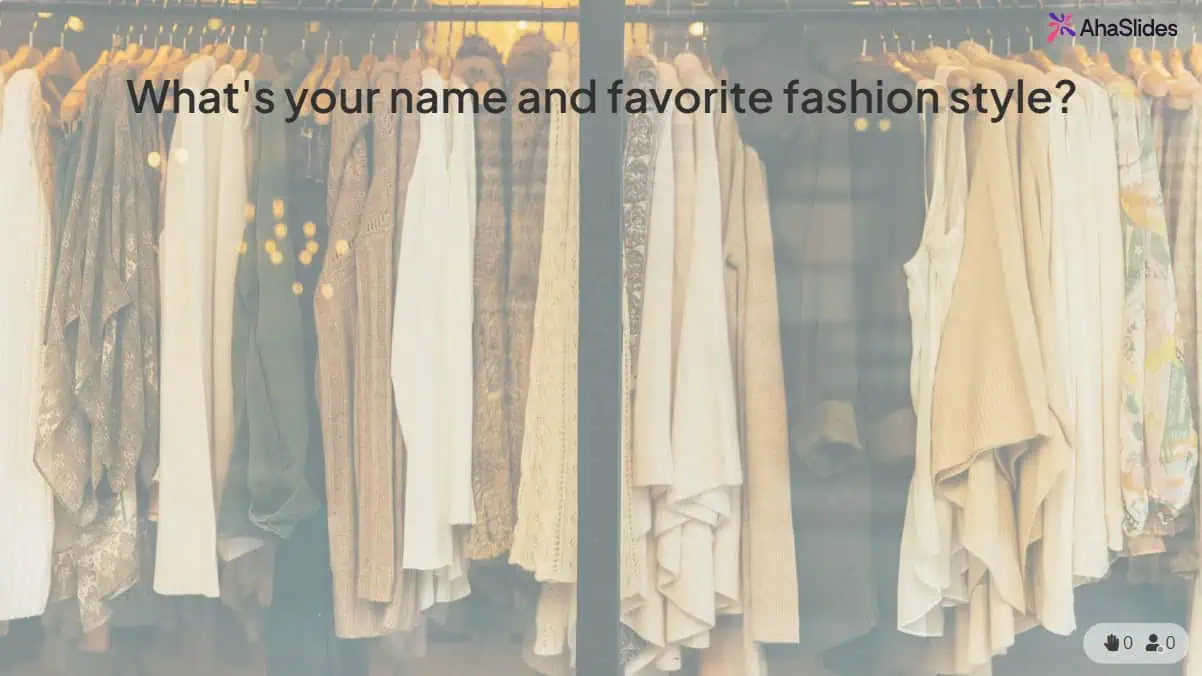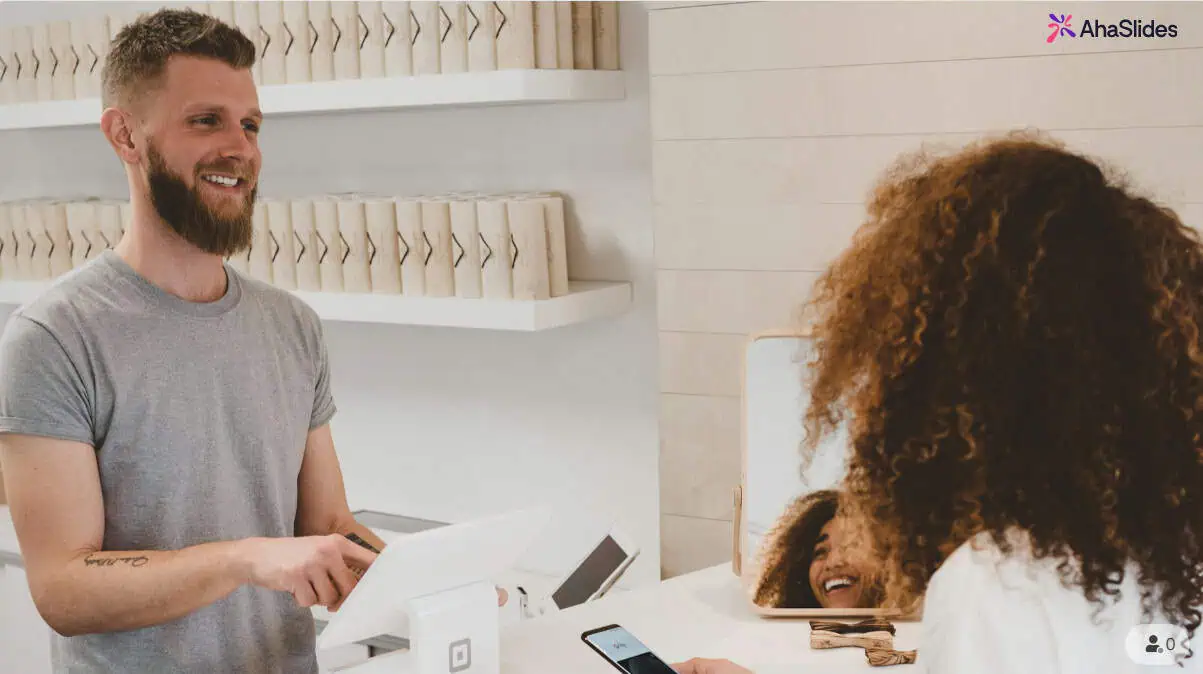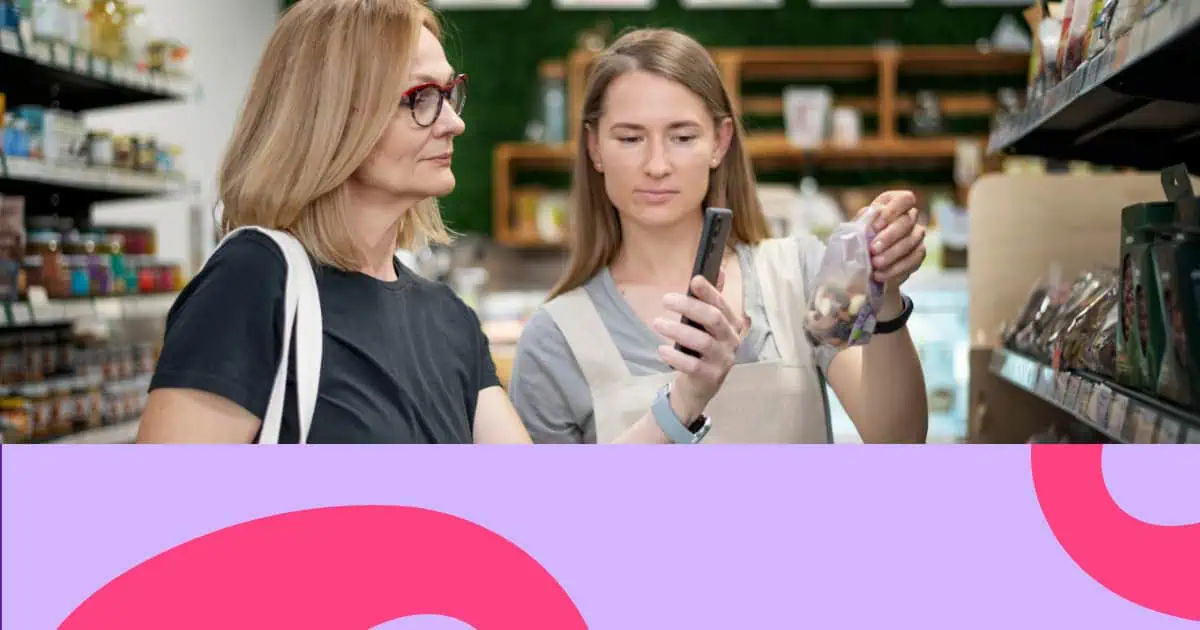Introduction
Retail stores and showrooms are expected to offer more than just products—they’re where customers expect to learn, explore, and compare before making a decision. But staff often struggle to provide in‑depth, consistent product education while juggling inventory, customer questions, and checkout queues.
With self‑paced, interactive tools like AhaSlides, retailers can turn any store into a structured learning environment—giving customers and staff access to accurate, engaging product information that supports better decisions and stronger conversion rates.
What’s Holding Back Customer Education in Retail?

1. Limited Time, Complex Demands
Retail staff have many responsibilities, from restocking to assisting customers and handling point‑of‑sale tasks. This limits their ability to deliver rich, consistent education on every product.
2. Inconsistent Messaging Across Staff
Without formal training modules or standardised content, different employees may describe the same product in varying ways—leading to confusion or missed value.
3. Customer Expectations Are Rising
For complex or high‑value products (electronics, appliances, furniture, cosmetics), customers seek deeper knowledge—features, benefits, comparisons, user scenarios—not just a sales pitch. Without access to that education, many delay or abandon purchases.
4. Manual Methods Don’t Scale
One‑on‑one demos are time‑consuming. Updating product brochures is costly. Verbal training doesn’t leave a trail for analysis. Retailers need a digital approach that scales, updates quickly, and can be measured.
Why Customer Education Delivers Real Retail Value
While many studies on customer education originate in SaaS, the same principles increasingly apply in retail:
- Companies with structured customer education programmes saw an average 7.6% increase in revenue.
- Product understanding improved by 38.3%, and customer satisfaction rose by 26.2%, according to Forrester-backed research. (Intellum, 2024)
- Companies that lead in customer experiences grow revenue 80% faster than their competitors. (SuperOffice, 2024)
In retail, an educated customer is more confident and likely to convert—especially when they feel informed, not pressured.
How AhaSlides Supports Retail Teams
Rich Multimedia & Embedded Content
AhaSlides presentations go far beyond static decks. You can embed images, video demos, explainer animations, web pages, product spec links, and even feedback forms—making it a living, interactive brochure.
Self‑Paced Learning for Customers and Staff
Customers scan a visible QR code in‑store and view a tailored product walkthrough. Staff complete the same modules to ensure consistent messaging. Each experience is accessible anytime, anywhere.
Live Quizzes & Gamified Events
Run real‑time quizzes, polls, or “spin-to-win” sessions during events. It creates buzz, encourages exploration, and reinforces product understanding.
Lead Capture and Engagement Analytics
Slide modules and quizzes can collect names, preferences, and feedback. Track which questions are missed, where users drop off, and what interests them most—all from built-in analytics.
Fast to Update, Easy to Scale
One change to a slide updates the entire system. No reprints. No retraining. Every showroom stays aligned.
Retail Use Cases: How to Deploy AhaSlides In‑Store

1. Self‑Guided Learning via QR Code at Display
Print and place a QR code in a visible spot near featured products. Add a prompt like: “📱 Scan to explore features, compare models, and watch a quick demo!”
Customers scan, browse a multimedia presentation, and optionally submit feedback or request help. Consider offering a small discount or voucher upon completion.
2. In‑Store Event Engagement: Live Quiz or Poll
During a product launch weekend, run a quiz on product features using AhaSlides. Customers join via their phones, answer questions, and winners get a prize. This draws attention and creates a learning moment.
3. Staff Onboarding & Product Training
Use the same self‑paced presentation to train new hires. Each module ends with a quiz to check understanding. This ensures every team member delivers the same core messaging.
Benefits for Retailers
- Informed Customers = More Sales: Clarity builds trust and speeds up decision-making.
- Less Pressure on Staff: Let customers learn while staff focus on closing or managing operations.
- Standardised Messaging: One platform, one message—delivered accurately across all outlets.
- Scalable and Affordable: One-time content creation can be used in multiple stores or events.
- Data-Driven Improvements: Learn what customers care about, where they drop off, and how to tailor future content.
- Loyalty Through Interaction: The more engaging and helpful the experience, the more likely customers are to return.
Tips for Maximising Impact
- Design content by product line, focusing on complex/high-margin SKUs first.
- Place QR codes at key traffic points: product displays, fitting rooms, checkout counters.
- Offer small rewards (e.g., 5% discount or free sample) for completing the presentation or quiz.
- Refresh content monthly or seasonally, especially during product launches.
- Use reports to guide staff training or adapt in-store merchandising based on feedback.
- Integrate leads into your CRM or email marketing flow for post-visit follow-up.
Conclusion
Customer education isn’t a side activity—it’s a core driver of retail performance. With AhaSlides, you can educate staff and customers alike using engaging, multimedia-rich content that scales and adapts. Whether it’s a quiet weekday or a packed promotional event, your store becomes more than a point of sale—it becomes a point of learning.
Start small—one product, one store—and measure the impact. Then scale up.
Templates to get you started

Fashion store quiz

Retail store employee training
Sources
- Intellum. “Research Reveals the Astonishing Impact of Customer Education Programs.” (2024)
https://www.intellum.com/news/research-impact-of-customer-education-programs - SuperOffice. “Customer Experience Statistics.” (2024)
https://www.superoffice.com/blog/customer-experience-statistics - LearnWorlds. “Customer Education Statistics.” (2024)
https://www.learnworlds.com/customer-education-statistics - SaaS Academy Advisors. “2025 Customer Education Statistics.”
https://saasacademyadvisors.com/knowledge/news-and-blog/2025-customer-education-statistics - Retail Economics. “The Role of Education in the Retail Experience Economy.”
https://www.retaileconomics.co.uk/retail-insights-trends/retail-experience-economy-and-education



